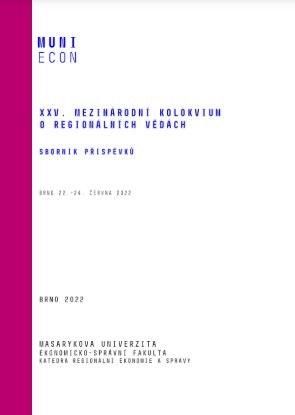VIACKRITERIÁLNA ANALÝZA SOCIOEKONOMICKÝCH DETERMINANTOV POTRAVINOVEJ DOSTATOČNOSTI V REGIÓNOCH V4
MULTICRITERIA ANALYSIS OF SOCIO-ECONOMIC DETERMINANTS OF FOOD SECURITY IN V4 REGIONS
Author(s): Mária Vargová, Zlata Sojková
Subject(s): Regional Geography, Socio-Economic Research
Published by: Masarykova univerzita nakladatelství
Keywords: food security; Visegrad Group; NUTS 2; I-distance method; cluster analysis;
Summary/Abstract: The research's goal is to evaluate the level of food security in 37 Visegrad group regions at the NUTS-2 level in terms of the impact of socio-economic indicators. We evaluate thirteen variables that cover six socio-economic areas: poverty and social exclusion, employment, education, economic accounts, health, and research and development. The data were acquired from Eurostat for period of years 2019-2020. We evaluate NUTS-2 regions’ level of food security by aggregating thirteen indicators into one complex index using I-distance method. According to the level of potential food insecurity risk, the regions are divided into five similar groups using k-means method of cluster analysis. We discovered that the most significant differences between groups of regions exist in the terms of severe material deprivation, gross domestic product, as well as the share of government R&D expenditure, unemployment rate, and infant mortality. According to the findings, 54 percent of V4 regions are at minimal risk of food insecurity, 35 percent are moderately at risk, and 11 percent are at risk of food insecurity. The V4 capitals' NUTS-2 regions are the least vulnerable to food insecurity. On the contrary, eastern, and southern Hungarian regions, as well as Eastern Slovakia, are the most vulnerable.
Book: XXV. mezinárodní kolokvium o regionálních vědách: Sborník příspěvků
- Page Range: 245-253
- Page Count: 9
- Publication Year: 2022
- Language: Slovak
- Content File-PDF

